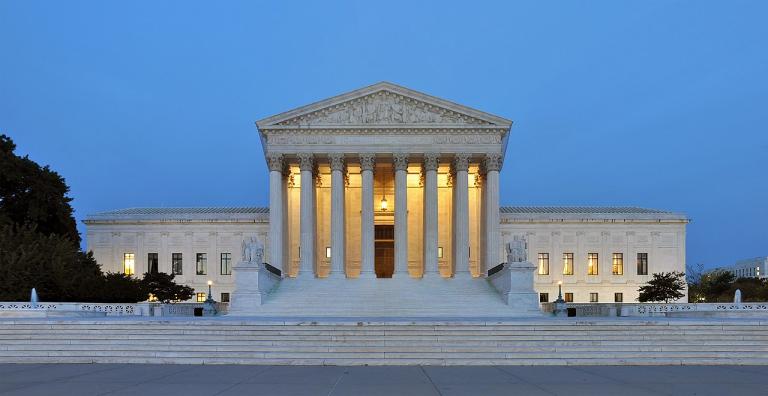We blogged about A Manifesto for National Conservatism, issued by a number of prominent conservatives.
National Conservatism is not the same thing as Christian Nationalism, though they are often confused. And no wonder, since one of the manifesto’s articles says that Christianity should enjoy a privileged position in America’s public sphere. (See our post about this, National Conservatism and Religion.)
Now an international group of prominent and mostly-conservative leaning theologians have responded to that manifesto with An Open Letter Responding to the NatCon “Statement of Principles.”
The letter says, for example, that
A pure nationalism, disconnected from universal ideals, risks becoming the mirror image of the abstract globalism the statement’s signatories rightly reject. By implicitly asserting the supremacy of nations over culture and communities, it subordinates both the universal and the particular to the national, as if national interests and national traditions were necessarily good and anything exceeding nations must therefore be evil.
The signatories criticize the “nation-state” for obliterating local cultures and is critical of the “Statement’s” focus on the American constitutional order, leaving out European models and issues of European conservatism:
The commitment to an explicitly “Anglo-American” ideal of “free enterprise” and “individual liberty” is at odds with much of the European conservative tradition which has historically sought to limit the market and uphold a non-individualistic model of liberty, balancing rights with responsibilities.
Furthermore, the Statement, while saying much about moral values, says nothing about love, which is “the supreme theological virtue and the guiding ideal of Christian civilization” and which binds binds members of society together.
“In the end ,” the letter concludes, “the National Conservative statement is neither conservative nor Christian.”
John Ehrett, a Lutheran and a political theorist, responded to the open letter with his post Some Questions for National Conservative’s Theological Critics. He notes that some of the signatories have advocated an “imperial model” as something to be desired over the “nation state.”
His first question is “how to account for the fact that premodern “empire” did not appear to conceive of itself as universal or global in the modern sense, but required an “other” against which to define itself?” Rome defined itself against the “barbarians.” “Today, however, the institutions of liberal internationalism do claim to enjoy universal/global jurisdiction.” Ehrett concludes (his italics):
given today’s empirical knowledge of the extent of cultural differences, it is reasonable to believe that a global transnational political authority is unlikely to be able to identify a common “center” that can justify terms of coexistence capable of peacefully mediating and preserving local differences.
His second question: “Is the nation-state always and everywhere more opposed to the preservation of local difference?” He thinks not. In fact, ” the American example of federalism [which the Open Letter signatories disdain] appears to pose an empirical problem for this claim.”
Finally, “to what extent are the potentialities of Christian theology actualized through an encounter with alternative traditions?” He cites evidence that Christianity has thrived when it encounters different perspectives and that a single global church that suppresses religious differences–I think of Roman Catholicism–might not be a good idea after all.
To my mind, national conservatives can make arguments against globalizing theo-political projects that sound in a distinctively Christian register, without forfeiting the universal claims of Christian morality by succumbing to a thoroughgoing relativism.
So which is better, individual nations or an empire that brings together many nations? Individual churches or a global church?
Next time, my thoughts on the controversy.
Illustration: War Flag of the Holy Roman Empire, Ad17minstral, CC BY-SA 4.0 <https://creativecommons.org/licenses/by-sa/4.0>, via Wikimedia Commons



















